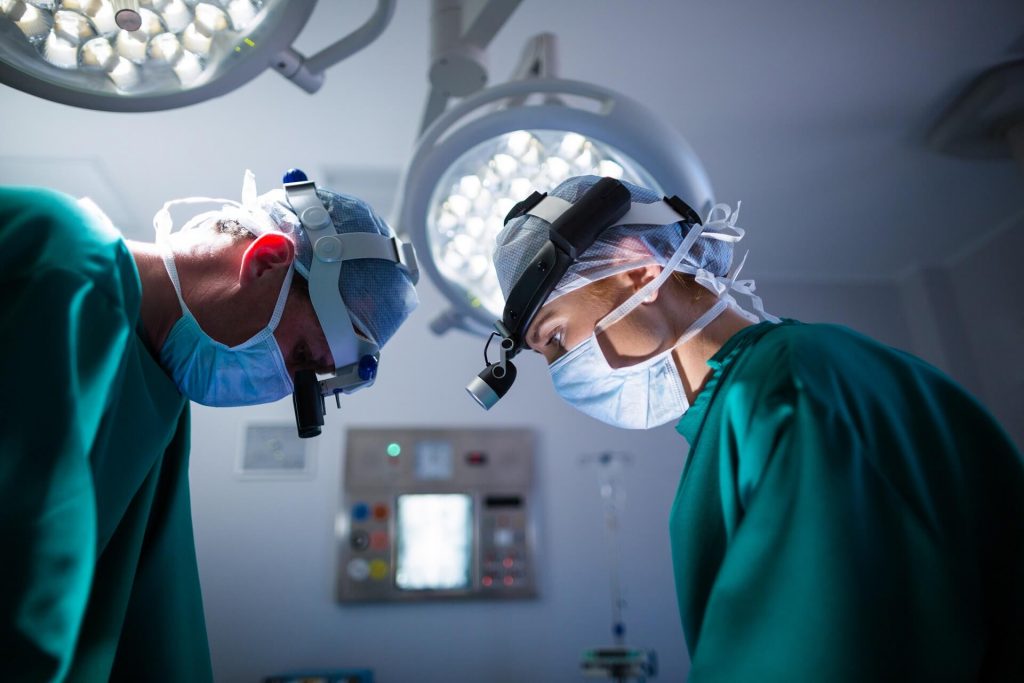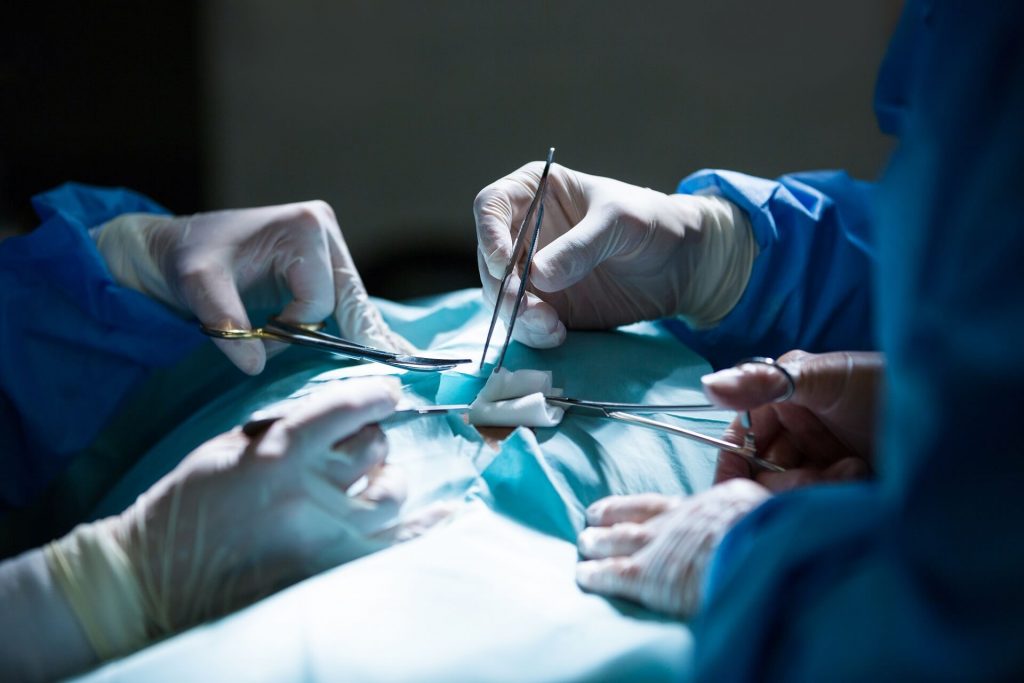Spinal implants are commonly used to treat spine issues and many procedures involving them are minimally invasive. However, having something implanted in your spine is not as simple or risk-free as you may have been led to believe. There are problems with spine implants and because Dr. Pauza wants his patients to be informed, we’ll be discussing them today.
About Spinal Implants
Before discussing the problems with spine implants, we’ll explain the different types of implants and what they’re typically used for.
Spinal implants are usually used for a few different reasons, such as assisting in the fusion of two vertebrae, improving spine stability, strengthening the spine, correcting spine deformities, treating degenerative spine diseases, and spinal stenosis. They commonly come in the form of the following:
Cages. These are medical devices that have a hollow center and perforated walls. Cages are most commonly used to treat patients that have a collapsed spinal disc. The cage is placed around a set of discs to encourage bone growth, stabilizing the spine.
Hooks. This implant is used with other devices, usually rods, to anchor them in place. There are many different types of hooks, including sublaminar and intralaminar.
Plates. Plates are shaped to mold to your spine’s shape. They’re commonly held in place by screws.
Pedicle screws. These implants are used as anchor points for spinal rods. They are used to secure bone fractures and vary in size and shape.
Rods. This implant is a flexible device typically used to restrict the movement of certain portions of the spine. They may be rounded, smooth, or threaded.
Spinal cord stimulator. Spinal cord stimulators are implants that send electric shocks to the spine in an effort to relieve back pain. Stimulators may be used along with medical-grade cables to apply tension to the spine as well.
Artificial lumbar disc. Artificial discs are most commonly implanted from the front of the spine into the space between the vertebrae in a procedure known as arthroplasty. These discs are made from a variety of materials, such as metals, plastics, metal and plastic composites, and more.

Problems With Spine Implants
There are many factors that can lead to problems with spine implants, including spinal implant failure. This includes the type of spine surgery used to implant the device as well as the complexity of the surgery. Both of these factors have a significant impact on the wear and tear spine implants go through. In addition to this, the type of implant placed in the spine, as well as the degree of force applied to it, are other risk factors that can lead to problems with spine implants.
Metallosis
Patients must also be monitored regularly after undergoing spine implant surgery to detect the possible development of metallosis and implant failure. Metallosis is a condition in which a patient’s blood becomes poisoned due to high levels of toxic metals in the blood. It commonly occurs when particles of metal from implants enter the bloodstream as well as tissue around the implant.
All spine implants will go through wear and corrosion. Wear is the mechanical process that is caused by changes in load distribution and micro-motion. Corrosion is how we refer to the electrochemical process of metal deterioration. Wear and corrosion both lead to debris from the implants being released into surrounding tissues and, eventually, the bloodstream. Over time, this may require revisional surgery. Complications associated with metallosis, wear, and corrosion include unidentified pain, neurological effects, implant loosening, implant failure, swelling, and metal staining of tissue.
In addition to this, different materials have been shown to cause different reactions. Cobalt is believed to lead to cellular apoptosis and necrosis. Aluminum is linked to seizures, epilepsy, and Alzheimer’s disease. Titanium is believed to inhibit osteoclastic activity, accelerate osteoclastic differentiation, and cause osteolysis.
Studies Documenting Problems With Spine Implants
In this article, a 36-year-old female patient who underwent spine surgery to receive cobalt-chrome rods and titanium fixtures for adult scoliosis had to have these instruments removed. This was recommended because soon after they were implanted she experienced continual pain and muscle twitching. These instruments were removed two years after implantation and doctors found that the tissue around the implant had metal staining.
There have been many cases published in which revisional surgery for implants could be strongly linked to corrosion and wear of the implants.
A study published in 2017 reported on the development of metallosis in a patient who received a cervical disc replacement known as a Bryan Disc implant. Eight years after the implantation she sustained a whiplash injury that caused the disc to loosen, leading to metallosis. Once this was found, the implant was removed immediately to treat this condition.
A 2016 study focused on a patient who experienced metallosis following the implantation of titanium instrumentation. This metallosis led directly to neural tissue compression.

Other Issues with Spine Implant Surgery
In addition to metallosis, wear, corrosion, and the issues highlighted in the studies discussed here, problems with spine implants also include typical risks linked to spine surgery.
Anesthesia complications. The majority of spinal operations require general anesthesia, which is known to cause issues for some patients. These issues include reactions to the drugs used for anesthesia and problems exacerbated by a patient’s existing medical issues.
Infection. All surgeries carry a risk of infection. An infection may only affect the area of the skin where the incision was made, known as a superficial infection. However, the infection may go deeper and affect areas around the spinal cord and vertebrae. These infections are much more serious and may require additional operations to treat the infection. It may even require the removal of spine implants.
Hardware fracture. When instruments such as screws, plates, or rods are implanted into the spine, they may break or move. This is known as a “hardware fracture” and may require additional surgery to remove or replace the hardware.
Implant migration. This term refers to implants that have moved from where they were placed during surgery. Migration typically takes place soon after implantation, before healing is complete and the implant is firmly held in place by scar tissue or bone growth. An implant that moves too far can have serious consequences, such as failing to stabilize the spine or damaging the spine. This is an issue that may also require additional surgery to replace the implant.
Spinal cord injury. All spine surgeries risk injuring the spinal cord. This can seriously injure nerves or the dura, leading to consequences such as paralysis of certain areas of the body.
Persistent pain. Sometimes, spine surgery simply fails. It’s very common for surgery to fail to completely relieve a patient’s pain. In fact, surgery may actually worsen pain in some cases.
Sexual dysfunction. The spinal cord is a very sensitive area and the spinal nerves carry signals that allow the body to function, feel, and have sex. Spinal cord damage can affect the pelvic region, leading to sexual dysfunction.
Transitional syndrome. In a healthy spine, each segment works to share the load and stress placed on the spine. Unfortunately, when one or two segments aren’t working, such as when they’ve been immobilized by fusion or other surgery, the adjacent segments take on greater stress. Over time, these segments of the spine can wear down, leading to a degeneration of the spinal discs in these areas. Dr. Pauza refers to this as “the domino effect”.
Pseudoarthrosis. This term refers to a fractured bone that has not healed or a fusion that was not successful. Pseudoarthrosis usually indicates that there’s motion between two bones that should be fused together. This typically leads to continued pain, which may increase over time. The motion caused by this may also increase stress on the instruments implanted as part of the fusion, causing screws or rods to break. This often requires revisional surgery to replace metal hardware, add more bone graft, or add a stimulator.
Dr. Pauza’s Discseel® Procedure
As you can see, there are a variety of problems with spine implants and risks associated with spine surgery. In addition to this, annular tears are one of the most common causes of back and neck pain caused by spinal disc issues. No surgery can relieve the pain caused by annular tears. What does this mean? This means that taking on the risks associated with spine surgery will not relieve your pain. Fortunately, Dr. Pauza has created a procedure that can address annular tears, providing lasting pain relief.
Dr. Pauza’s Discseel® Procedure is a non-surgical, minimally invasive procedure that has provided back and neck pain relief to many patients.
If you’re ready to stop living with back or neck pain, apply for the Discseel® Procedure today and find out if you’re a candidate!
Featured image created by jcomp – www.freepik.com


